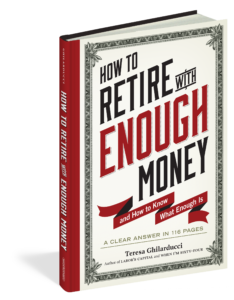Excerpted from Teresa Ghilarducci’s How to Retire with Enough Money.
If you live to the age of 80, you’ll spend as much time being a senior citizen as you did being a child. We need to spend time preparing for this last stage of life. Or, as I like to say, our young selves need to take care of our older selves.
A key part of that is understanding the roles the major government social insurance programs, Social Security and Medicare, will play in your later years. Consider this: They are worth almost half a million dollars to a middle-income American. According to economist Eugene Steuerle and his colleagues at the Urban Institute, a single man who retires in the year 2020 after a full career earning a median wage (about $44,000) can expect to receive $536,000 in Social Security and Medicare benefits. For a married couple, also median earners retiring in 2020, the expected benefits are more than a million dollars. These are stunning numbers. It makes me proud that our country made a commitment during the Depression to make sure that everyone would be protected as they aged. I think you’ll agree that most of us wouldn’t have the wherewithal to match these amounts, even through a little more financial prudence and picking the right investments.
Despite this valuable insurance, and despite the obvious good these programs do for Americans, they’re underappreciated. Social Security in particular is chronically under attack by people who want to privatize it in the name of smaller government. Political elites use it as a bargaining chip in budget negotiations, calling for cuts. (Don’t be fooled; raising the normal retirement age to 70 is a benefits cut, however they might dress it up.) But here are the key realities of Social Security that everyone should know:

Reality #1: Social Security is an essential form of insurance.
It provides support for young families in the event of the death or disability of its breadwinners. It helps children with severe disabilities. It insures workers against old age, disability, or dying and leaving behind a survivor without adequate income. As a retirement benefit, Social Security is worth about $300,000 for the average household. Equally important, its benefits are guaranteed. In contrast, 401(k) returns are very much not guaranteed.
Reality #2: Social Security and Medicare benefit all workers, whether white-, pink-, or blue-collar.
In 2012, 55 million Americans (out of a population of 313 million) cashed Social Security checks. These were members of all segments of society—rich and poor, left and right. Economist Moshe Milevsky makes this clear in his excellent book Your Money Milestones: A Guide to Making the 9 Most Important Financial Decisions of Your Life. He writes that all households, rich and poor, have the government as an economic partner. We all pay taxes, and we all receive benefits from it. Through our votes, we exercise some control over how that money is spent. So no matter what your political leanings are or what your tax bracket is, the government is part of your financial life and always will be. This is equally true for the corporate CEO, the smallbusiness owner, and the starving artist.
Reality #3: Social Security is on sound financial footing.
In fact, it’s a lean and efficient success. In 2015, its administrative expenses (as a percentage of all Social Security spending) were less than 1 percent, falling from 2.2 percent in 1957. Compare that with the average 401(k), which has expenses three times as high!
To learn more about Ghilarducci’s recommendations for the future of social security, check out her book.
 About the Book:
About the Book:
Here is a single-sit read than can change the course of your retirement. Written by Dr. Teresa Ghilarducci, an economics professor, a retirement and savings specialist, and a trustee to two retiree health-care trusts worth over $54 billion, How to Retire with Enough Money cuts through the confusion, misinformation, and bad policy-making that keeps us spending or saving poorly.
It begins with acknowledging what a person or household actually needs to have saved—the rule of thumb is eight to ten times your annual salary before retirement—and how much to expect from Social Security. And then it delivers the basic principles that will make the money grow, including a dozen good ideas to get current expenses under control. Why to “get rid of your guy”—those for-fee (or hidden-fee) financial planners that suck up valuable assets. Why it’s always better to pay off a loan or a mortgage.
There are no gimmicks, no magical thinking—just an easy-to-follow program that works.
Buy the Book
Amazon | B&N | Indiebound | Workman





No Comments